Leaders often find themselves buried under a multitude of initiatives, projects, and priorities. The temptation to do everything can be strong, but it often leads to diluted efforts and mediocre results. Instead, the power of Essentialism—a disciplined pursuit of less but better—can transform how organizations operate and achieve their goals. Here’s how executives can identify high-impact initiatives that yield maximum results.
The Pitfalls of Overcommitment
Recent studies by McKinsey & Company highlight a stark reality: companies that spread their resources across too many initiatives often struggle to achieve meaningful progress in any of them. When teams are stretched thin, their effectiveness plummets, leading to burnout and disengagement. The antidote lies in essentialism—focusing on what truly matters and eliminating the rest.
The Essentialist Approach
Greg McKeown, in his book "Essentialism: The Disciplined Pursuit of Less," advocates for a rigorous selection process where only the most impactful initiatives are pursued. This requires a strategic mindset shift from doing more to doing more of what matters. Here are key steps to identify and prioritize high-impact initiatives:
Clarify your Purpose
- Start by defining or revisiting your organization’s core purpose, mission and strategic goals. What are the top three objectives that will drive your company’s success over the next 3-5 years? Aligning initiatives with your purpose and goals ensures every effort is purposeful and impactful.
Evaluate Potential Impact
- Assess potential initiatives based on their expected impact. A framework like the ICE (Impact, Confidence, Ease) score can be useful. Rate each initiative on its potential impact, your confidence in its success, and the ease of implementation. Focus on initiatives with high impact and confidence scores.
Engage in Rigorous Sequencing of Work
- Gather input from key stakeholders to identify initiatives that align with your core mission. Use tools like the Eisenhower Matrix to distinguish between urgent and important tasks. Remember, not all urgent tasks are important, and vice versa.
Eliminate the Trivial Many
- The courage to eliminate low-impact initiatives is crucial. As Steve Jobs famously said, “Innovation is saying no to a thousand things.” By saying no to less important projects, you free up resources for what truly matters.
Focus on Results, Not Activities
- Shift the focus from activities to outcomes. Set clear, measurable objectives for each initiative. Regularly review progress and be willing to pivot or discontinue initiatives that aren’t delivering the expected results.
Case Study: Apple’s Essentialist Strategy
Apple Inc. provides a compelling example of essentialism in action. When Steve Jobs returned to Apple in 1997, he famously cut 70% of the company's products, allowing the team to focus on just four key products. This radical simplification enabled Apple to concentrate its resources and innovate, leading to the development of groundbreaking products like the iPod, iPhone, and iPad.
The Benefits of Focusing on High-Impact Initiatives
Enhanced Productivity
- Teams that focus on fewer, more important initiatives can work more efficiently and effectively, leading to higher quality outcomes.
Improved Employee Engagement
- Employees are more motivated and engaged when they see their work contributing to significant, meaningful goals. This can reduce turnover and increase overall job satisfaction.
Greater Organizational Agility
- With fewer initiatives, organizations can adapt more quickly to changing market conditions. This agility is a crucial competitive advantage in today’s fast-paced business environment.
Higher Return on Investment
- By channeling resources into high-impact initiatives, companies can achieve greater returns on their investments, driving profitability and long-term success.
Final Thoughts
For corporate leaders, the challenge is clear: resist the allure of doing it all. Instead, embrace the principles of essentialism to identify and focus on high-impact initiatives. By doing less but better, organizations can achieve extraordinary results, driving growth, innovation, and sustained success. The power of essentialism lies in its simplicity—removing the trivial many to let the vital few shine. It’s a strategic approach that today’s executives can’t afford to ignore.

